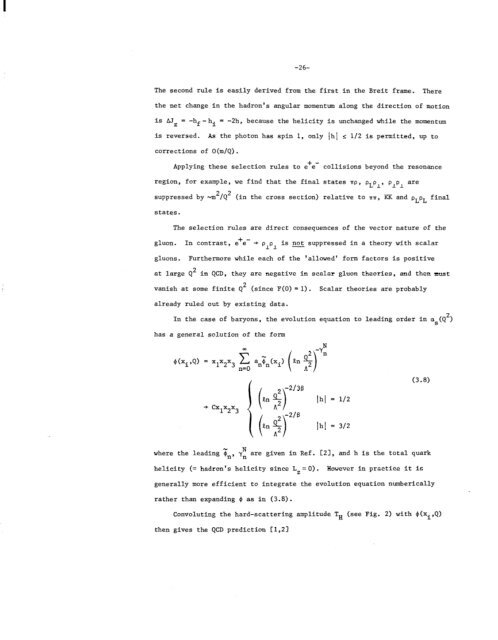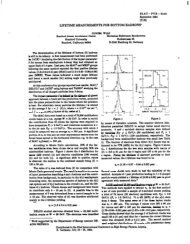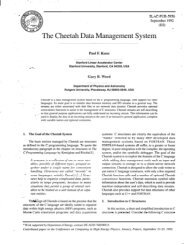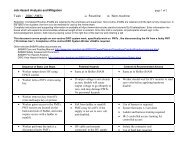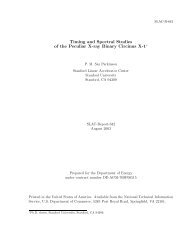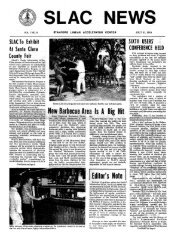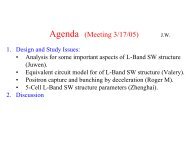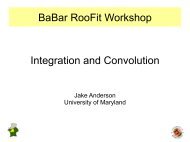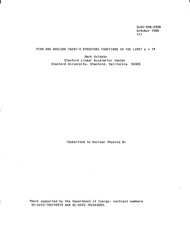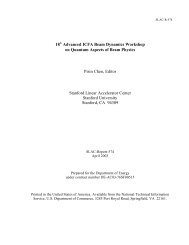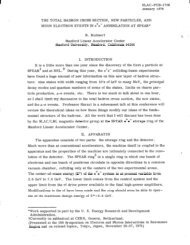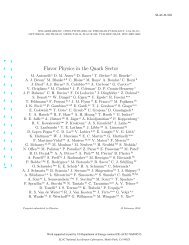slac-pub-2605 - SLAC - Stanford University
slac-pub-2605 - SLAC - Stanford University
slac-pub-2605 - SLAC - Stanford University
You also want an ePaper? Increase the reach of your titles
YUMPU automatically turns print PDFs into web optimized ePapers that Google loves.
-26-<br />
The second rule is easily derived from the first in the Breit frame. There<br />
the net change in the hadron's angular momentum along the direction of motion<br />
is Nz = -hf -hi = -2h, because the helicity is unchanged while the momentum<br />
is reversed. As the photon has spin 1, only lhl I l/2 is permitted, up to<br />
corrections of O(m/Q).<br />
Applying these selection rules to e+e- collisions beyond the resonance<br />
region, for example, we find that the final states np, PLPJ. ’ PlPL are<br />
suppressed by yn2/Q2 (in the cross section) relative to xx, KK and pLpL final<br />
states.<br />
The selection rules are direct consequences of the vector nature of the<br />
gluon. In contrast, e+e- + plpl is not suppressed in a theory with scalar<br />
-<br />
gluons. Furthermore while each of the 'allowed' form factors is positive<br />
at large Q2 in QCD, they are negative in scalar gluon theories, and then must<br />
vanish at some finite Q2 (since F(0) = 1). Scalar theories are probably<br />
already ruled out by existing data.<br />
In the case of baryons, the evolution equation to leading order in as(Q2)<br />
has a general solution of the form<br />
jhl = l/2<br />
Ihj = 3/2<br />
(3.8)<br />
where the leading zr.,, y", are given in Ref. 121, and h is the total quark<br />
helicity (= hadron's helicity since L =O).<br />
2<br />
However in practice it is<br />
generally more efficient to integrate the evolution equation numberically<br />
rather than expanding @ as in (3.8).<br />
Convoluting the hard-scattering amplitude TR (see Fig. 2) with @(xi,Q)<br />
then gives the QCD prediction El,21


